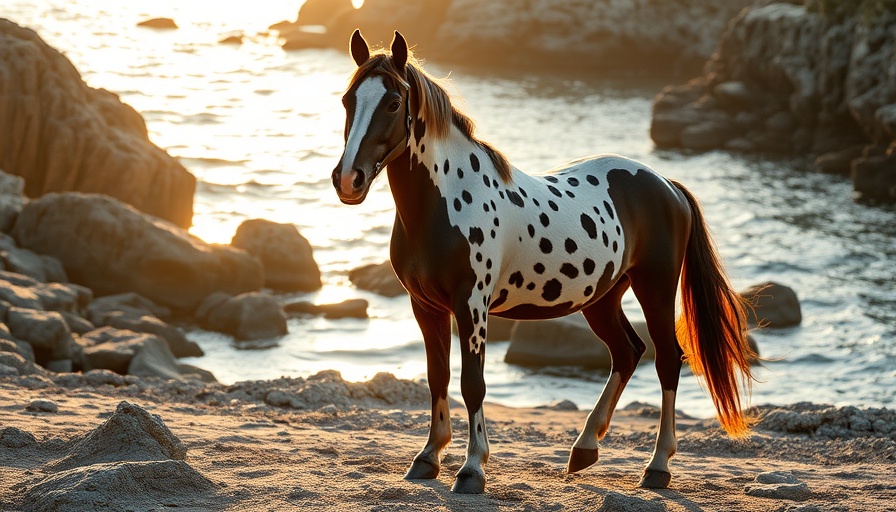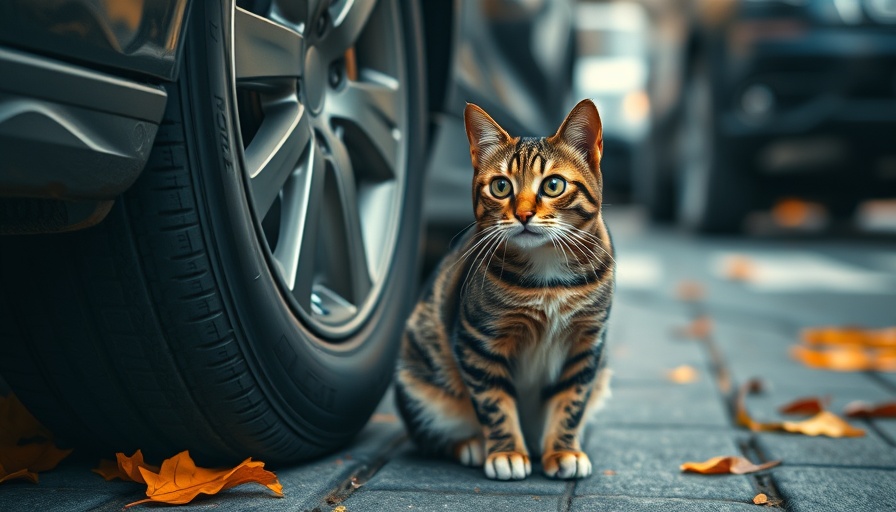
Understanding the Unique Knabstrupper Horse
The Knabstrupper, an enchanting and athletic breed, has captivated horse lovers since its origins in Denmark. With its striking spotted coat reminiscent of the Appaloosa, the Knabstrupper isn't just a beautiful sight; it boasts a temperament that’s gentle and calm, making it an excellent companion for both riding and leisure.
The Historical Roots of the Knabstrupper
Rooted in a story that began with Flaebehoppen, a spotted mare bred in 1812, the Knabstrupper owes its existence largely to crossbreeding with the Frederiksborg stallion. This mix not only produced horses with vibrant patches but also established the Knabstrupper as a versatile warmblood that can engage in various equestrian activities, from dressage to show jumping.
A Glimpse at Knabstrupper Characteristics
Typically standing between 15.2 to 16 hands and weighing around 1,100 pounds, Knabstruppers are robust and hardy animals. Their lifespan ranges from 25 to 30 years, ensuring that they can be cherished companions for a long time. This breed’s coat can exhibit stunning leopard spotting, but they can also be found in solid colors such as gray, chestnut, or bay, adding to their allure.
Caring for Your Knabstrupper: Tips for Owners
One of the most appealing aspects of the Knabstrupper is its relatively low maintenance requirements. These horses thrive on social interaction and regular activity. Ensuring routine veterinary care, dental check-ups, and farrier visits are essential for their health. However, caution must be taken for Knabstruppers with light-colored coats, as they can be prone to sunburn. Equipping them with sunscreen, such as the Equus Magnificus Essential Equine Horse Sunscreen, is an important recommendation for guardians.
Health Considerations for Knabstruppers
Unfortunately, the Knabstrupper isn’t immune to certain genetic disorders, such as Fragile Foal Syndrome (FFS), which impacts connective tissue and can lead to severe complications for foals. Symptoms like hyperextensible joints and fragile skin raise critical concerns for breeders and owners alike. While FFS is a poignant issue within the breed, awareness and genetic testing can help mitigate risks.
Engaging with the Community: The Importance of Understanding Breeds
As societies grow increasingly focused on animal welfare, knowing the specific needs and characteristics of horse breeds like the Knabstrupper becomes essential. Engaging in community events, whether horse shows or educational seminars, helps foster a greater understanding of these beautiful animals, allowing for better care and ethical treatment.
Inspiring Connections: Building Bonds with Knabstruppers
Establishing a bond with a Knabstrupper can be rewarding. These horses require emotional connection and trust. Whether you are a seasoned equestrian or a novice, taking the time to understand their behaviors and needs nurtures a lifelong partnership. Riding a Knabstrupper not only presents a joyful experience but also deepens the bond between horse and rider.
Future Insights: The Growing Popularity of Knabstruppers
With the continued rise in the popularity of equestrian sports, breeds like the Knabstrupper could see an increase in demand. Their adaptability and striking appearance make them desirable for various disciplines. Educating future horse owners about this wonderful breed through community outreach will be crucial in ensuring that these remarkable animals are appreciated and well cared for.
Final Thoughts: Embracing the Joy of Owning a Knabstrupper
Owning a Knabstrupper is about more than just looks; it’s about forming a deep connection with a creature that can enrich your life in numerous ways. These horses are a testament to the beauty of nature and the joy of companionship. If you're ready to explore the world of Knabstruppers, consider reaching out to local breeders or rescue organizations that specialize in this unique breed!
 Add Row
Add Row  Add
Add 


Write A Comment